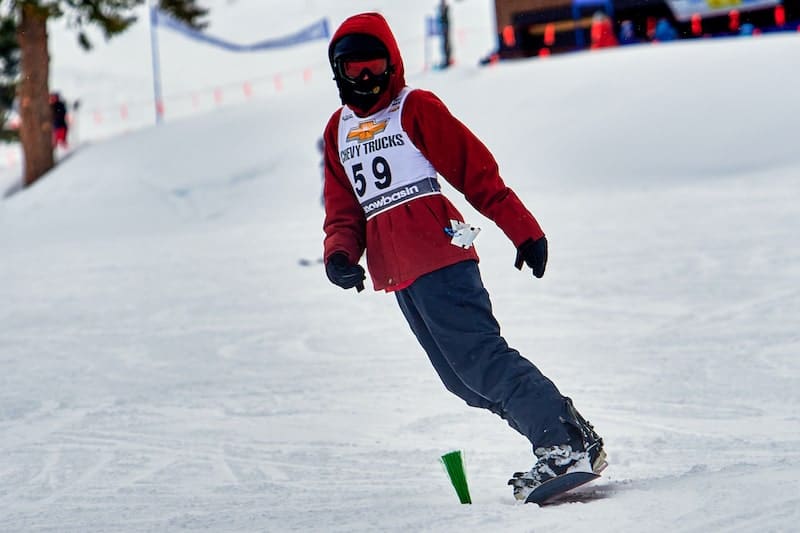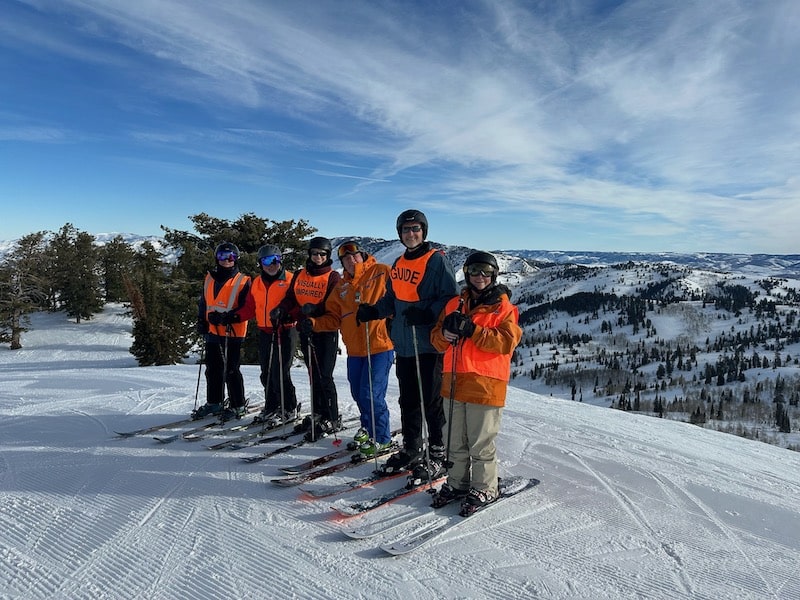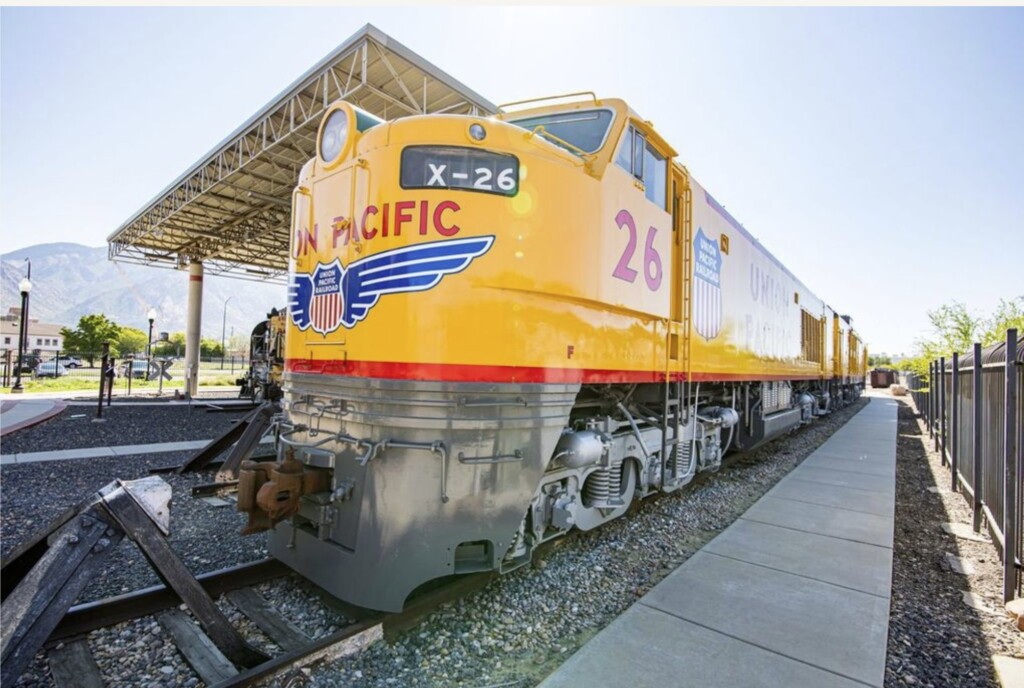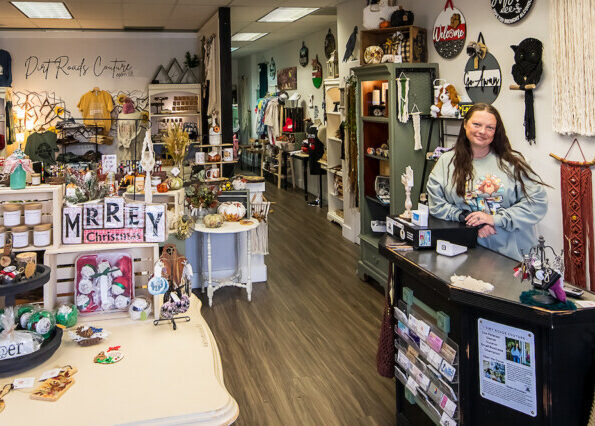Title: Anyone Can Ski
Adaptive Ski Programs Offer Mountain Slopes and Adventures to the Blind
OGDEN, Utah — When Melissa Helmbrecht brought her 6-year-old son to his first ski lesson, she was nervous.
Her son Jude has autism, and she worried the ski instructors wouldn’t know how to work with him. She hoped it wouldn’t turn out like T-ball, where Jude initially charged after the ball no matter where it went and no matter the position he was assigned to play. But the T-ball coach, not realizing that Jude didn’t understand, yelled at him. Jude stopped chasing the ball. In the games that followed, Melissa watched Jude sit and play in the dirt.
“He shut down,” she said.
A flier from Jude’s school caught Melissa’s attention. It was from Ogden Valley Adaptive, a nearby organization claiming to teach people with disabilities how to ski. No one in the family skied, but Jude loved playing the video game Mario & Sonic at the Winter Olympic Games. Maybe, Melissa thought, Jude would enjoy skiing.
At the first lesson, Jude was adamant about two things. He didn’t want to ski, he wanted to snowboard. And he refused to ride the beginner lift.
The instructors, patient and unphased, adapted. One instructor pushed Jude partway up the hillside and helped him snowboard down. It worked. Lesson after lesson, as Jude got better, that instructor ran next to him to keep up.
By that winter’s end, Jude did the unthinkable — he rode the chairlift.

Today, 12 years later, Jude can snowboard black diamonds (the most advanced terrain). Encouraged by Jude’s instructors, Melissa learned to ski and even taught Jude’s sister. The three of them now ski together at Powder Mountain every weekend.
“I’m so thankful that I have this with my kids,” Melissa said. “I tell people all the time about this program.”
Ogden Valley Adaptive has been giving ski lessons to people with disabilities since 2009. It’s one of six organizations in Utah that offers lessons in adaptive sports.
“We are bursting at the seams as far as people wanting to take lessons,” says Alex Davenport, executive director.
About one in four adults in the U.S. have some type of disability, according to the Centers for Disease Control and Prevention. By that metric, Alex estimates northern Utah is home to over 135,000 people with disabilities.
“We’re really only reaching a small percentage of the population who could benefit from our services,” Alex said.
What are those benefits? Study after study shows that getting outside and being physically active improves mental health and well-being. It’s why organizations like Ogden Valley Adaptive exist — to make sure that those with disabilities have the opportunity to get outside, too.
This winter, Ogden Valley Adaptive is on track to give 500 ski lessons to participants whose ages range from 3 to 97, and whose disabilities span from cognitive to physical. Each participant’s needs are different, but everyone shares one common goal: to play outdoors in Utah’s stunning natural beauty, and in the winter, to enjoy what’s touted as the greatest snow on earth.
“There’s something magical about sliding [on snow],” says Jacob Vigneault, who’s taught adaptive skiing for half his life. The 36-year-old snowboarder specializes in working with people with autism, like Jude, whom he taught for more than 10 years.
Jacob taught 16-year-old Austin Bayliss, too. Although Austin can’t communicate how he’s feeling with words, his mom, Nicole Van Buskirk, knows Austin loves to ski.
After a ski lesson, Austin smiles and laughs, she says. He holds his head up high; his shoulders are back. “He is so happy. You can just feel it. It’s like he’s radiating heat.”
When Austin’s behavior began to improve at school, a therapist joined them at Snowbasin Resort to see what ski lessons were all about.
“This is more than just, ‘Can we get you out skiing?’” Jacob said. For people with autism, “it’s about developing interpersonal skills.” It’s saying hello to the person scanning lift tickets. It’s engaging with the program’s rotating volunteers. It’s learning that to ride the chairlift you have to wait in line — something Austin doesn’t like.
“[Skiing] teaches them that there’s a process in life,” Nicole said.
For others, the chance to ski is about reclaiming independence.
When Barbara Oleynick began losing her vision in her mid-30s due to retinitis pigmentosa, she figured she’d never ski again. Nearly ten years passed before she learned about Ogden Valley Adaptive and scheduled lessons. As Barbara skis, two instructors, a volunteer, and her husband surround her in what she describes as a “bubble.”
“It’s stressful as hell,” she said. “My biggest fear is that I’m going to run into somebody because it looks like I can see normally, but I can’t. Then, once you start skiing, you get the confidence of the people around you, and you trust them. It is absolutely exhilarating.”
Barbara, now 64, said that vision loss requires her to be cautious, though she still bumps into things. But skiing makes her feel normal.
“It’s that feeling of speed and freedom and that rush of fresh air. You can’t get it any other way … It’s what lights me up and keeps me going the rest of the year.”






